Sloping Garden Design
Posted on 20th March 2020 at 17:41
Designing a sloping garden is challenging. I’ve designed many sloping gardens – I work mainly in Berkshire, Surrey, and Buckinghamshire and they’re all pretty hilly. Staring at a steep site that you want to use as a garden can be daunting and it's hard to know where to start. Here are some tips on how to design your sloping site.I design gardens all around London and the Home Counties, here are some projects completed in Surrey:-
Understanding the level changes in a sloping garden
So that you can enjoy your garden and get around it safely and easily you need to create some flat spaces. Level areas are essential for lawns/terraces/sheds/etc and to make maintenance easier. The only way to create flat areas in a sloping garden is to terrace the garden. This means building retaining walls to support the terraces and this is usually very expensive due to the amount of work, materials and soil movement required.
The first step is to measure the garden and then survey the levels, in order to find out the height differences between various parts of the garden. You can hire surveying equipment and then do some research on-line, or by visiting your local library, on how to survey levels. If you have complex level changes you may want to consider paying a garden designer, or surveyor to come round and do the level survey for you. Your local horticultural college may also run a one-day course.his garden design in in Woking,
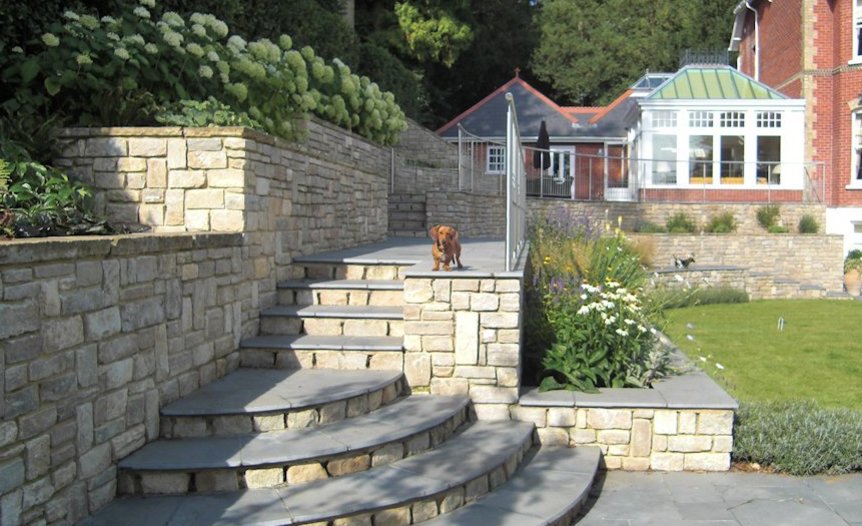
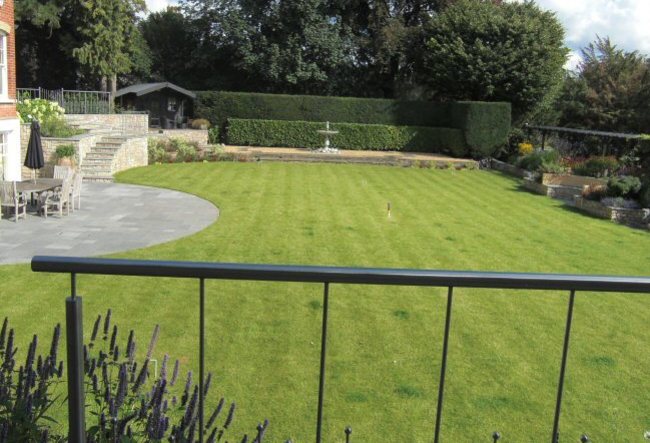
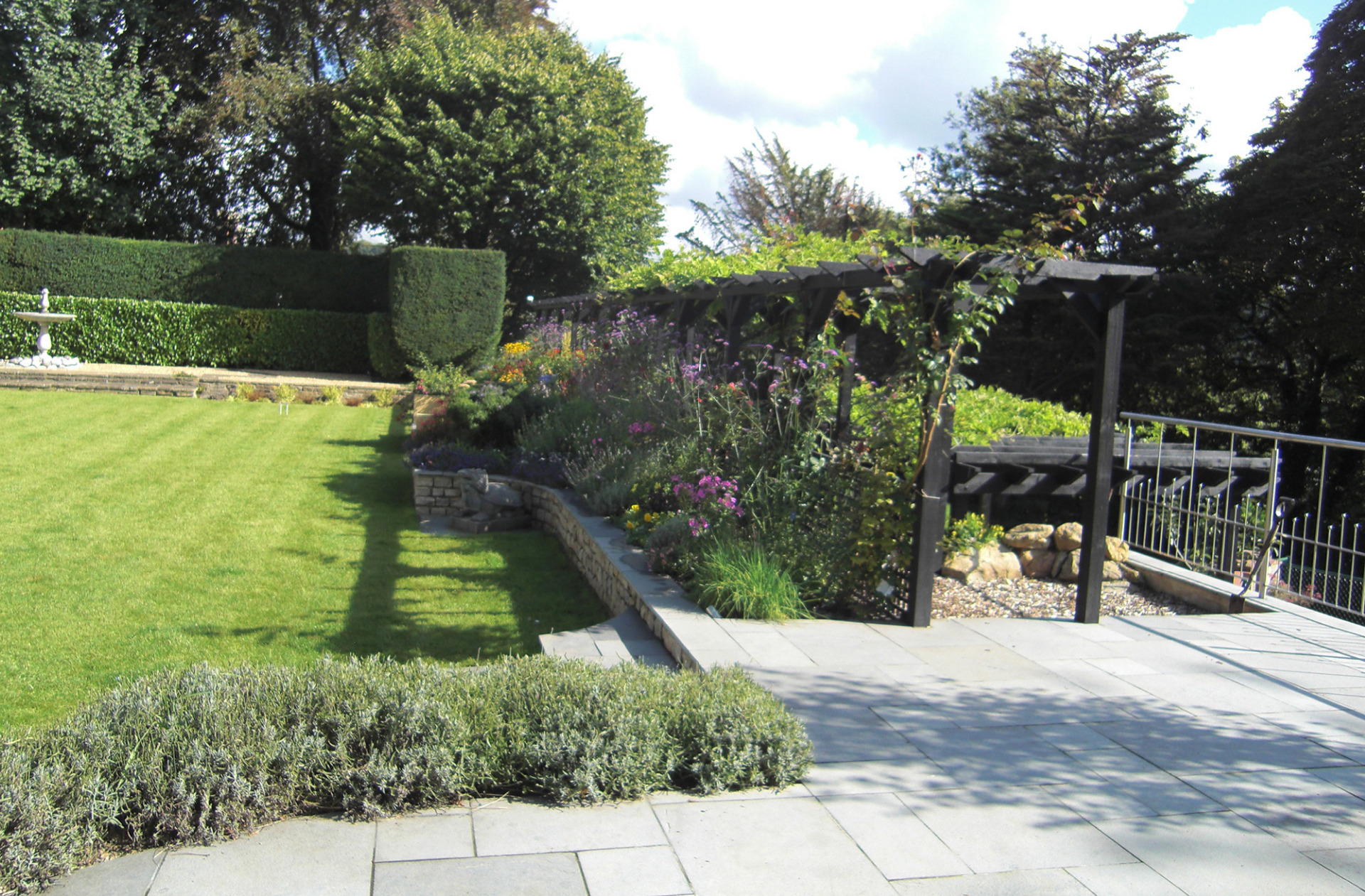
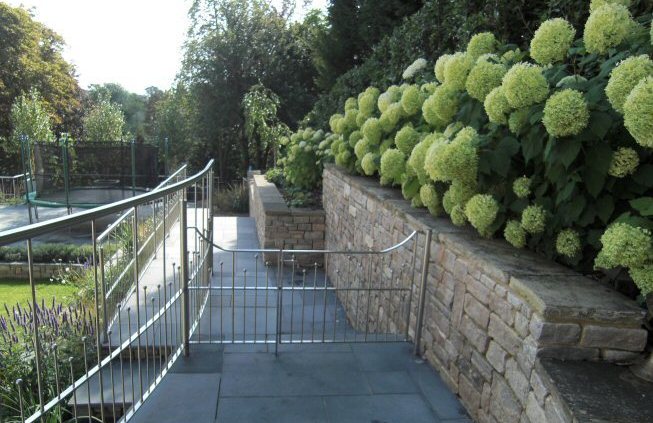
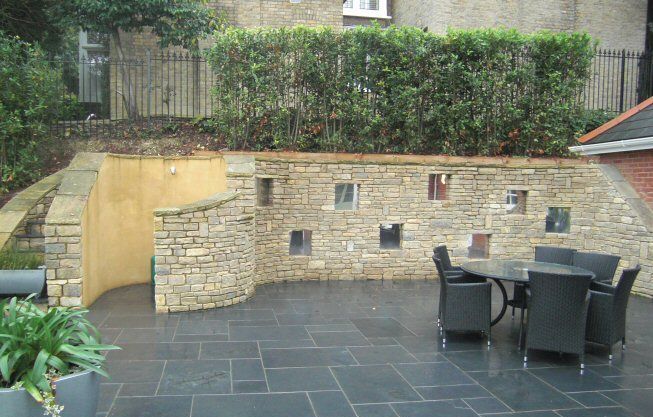

Working with the level changes to create the new garden
When designing a sloping garden, it’s very important to understand fully the level changes across the site. Once these are put onto a plan of the site you can create some sections across the garden to create a visual of the slopes within the site. This will tell you how high any retaining walls need to be for any given distance away from the house. For example, with a garden that slopes away from the house, if you are trying to create a patio area directly outside the house the further away from the house you wish the patio to extend, the higher the retaining wall you will need. A higher retaining wall needs more steps to access the lower/higher level. If possible, avoid very high retaining walls, and split the garden into fewer, shallower levels.
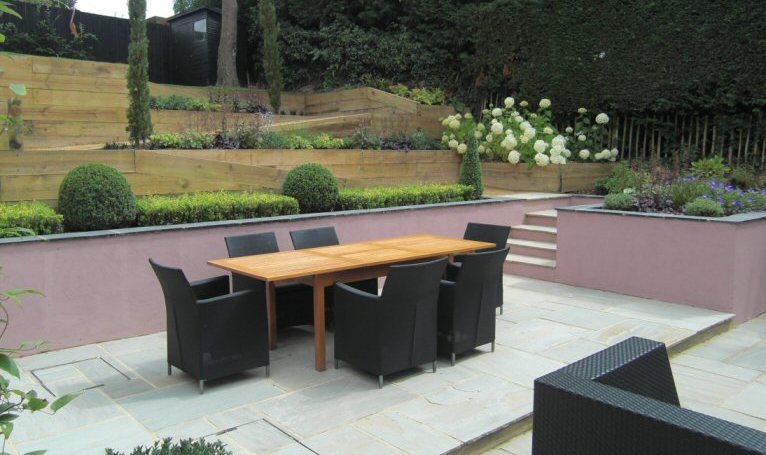
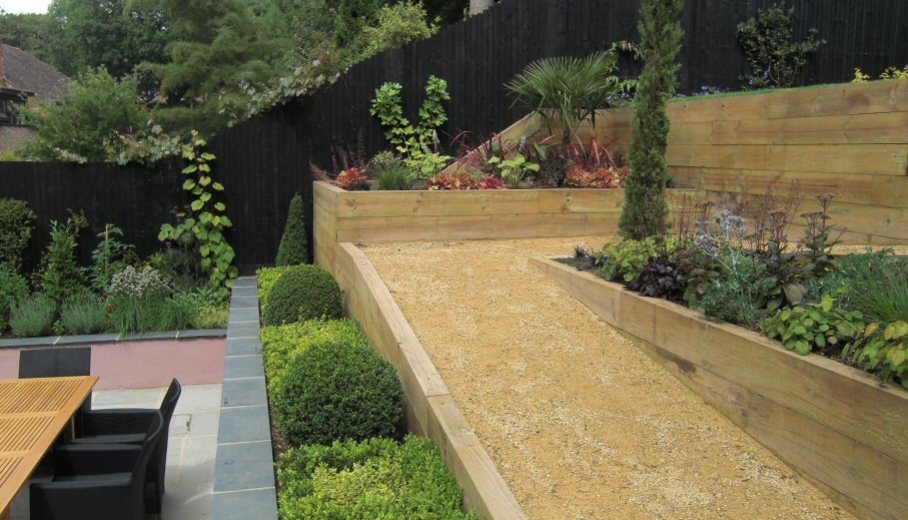
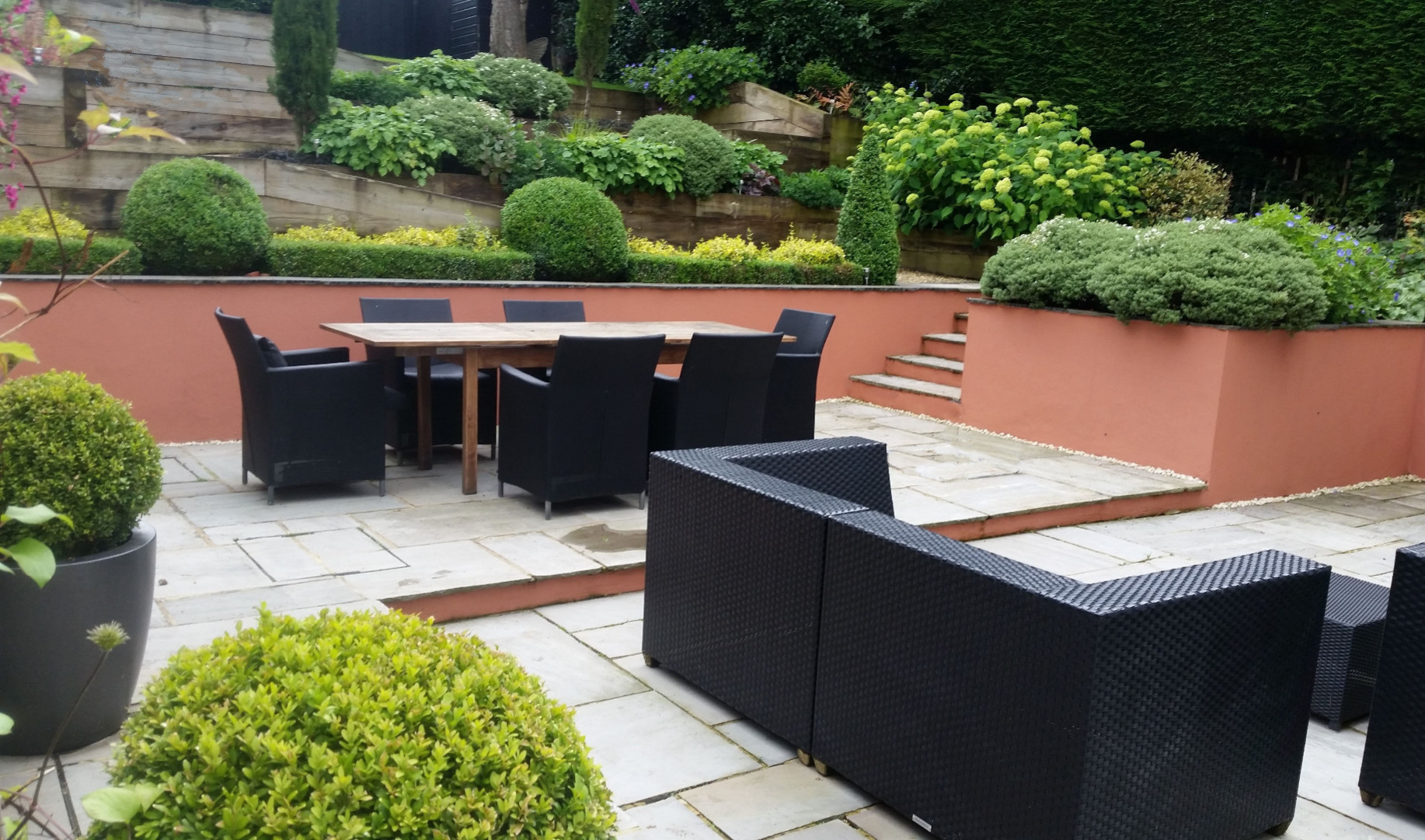
Building the retaining walls
You will need to decide what material you want to use to build the walls. There are many different options – rendered blockwork, brick, stone, gabion cages, railway sleepers, timber and even compacted earth. Your choice of building materials will depend on your budget, the look you’re going for, and what the wall is to support.
Getting rid of any earth excavated is another consideration. You will need to dig footings for the walls and excavate the levels and this will create a pile of excess soil. So, don’t forget to factor into your costs the price of skip hire or a grab loader to dispose of the soil.
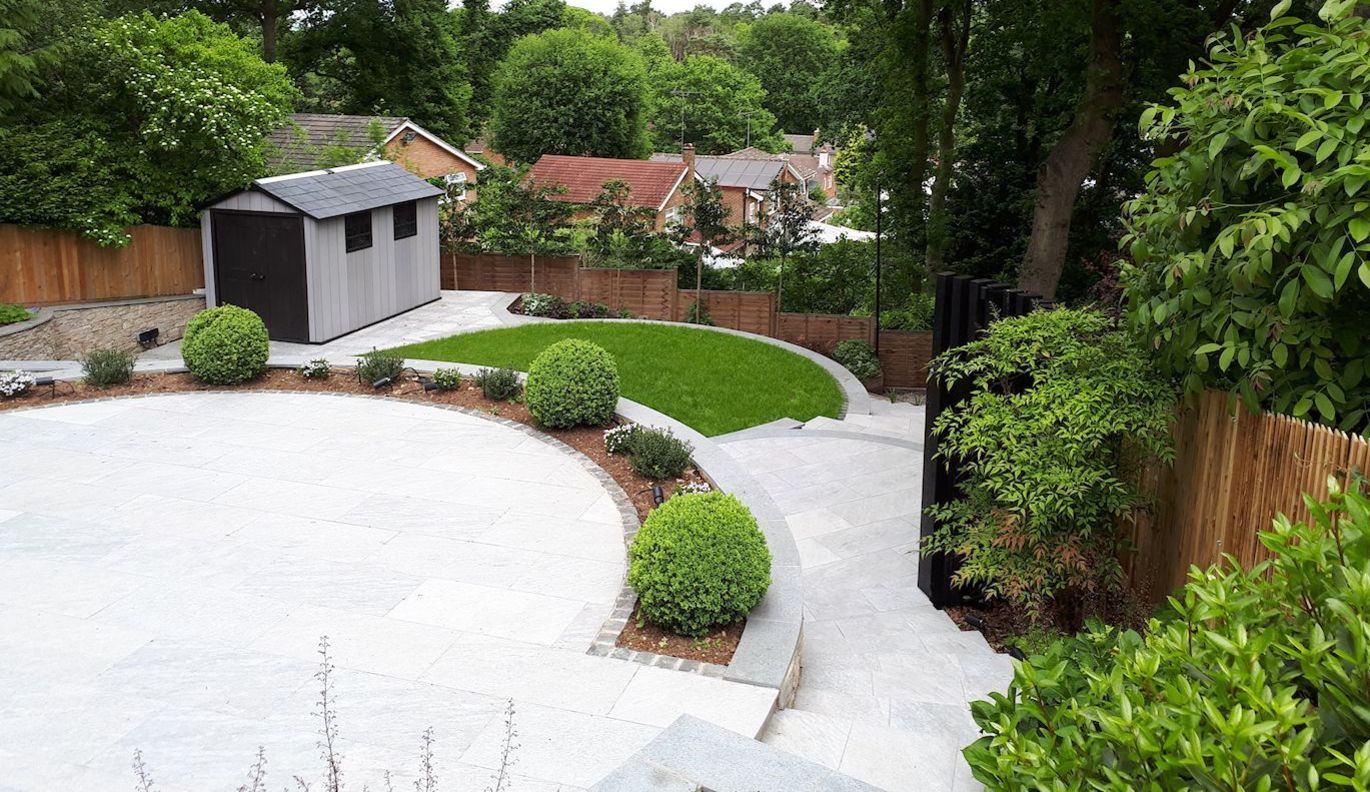
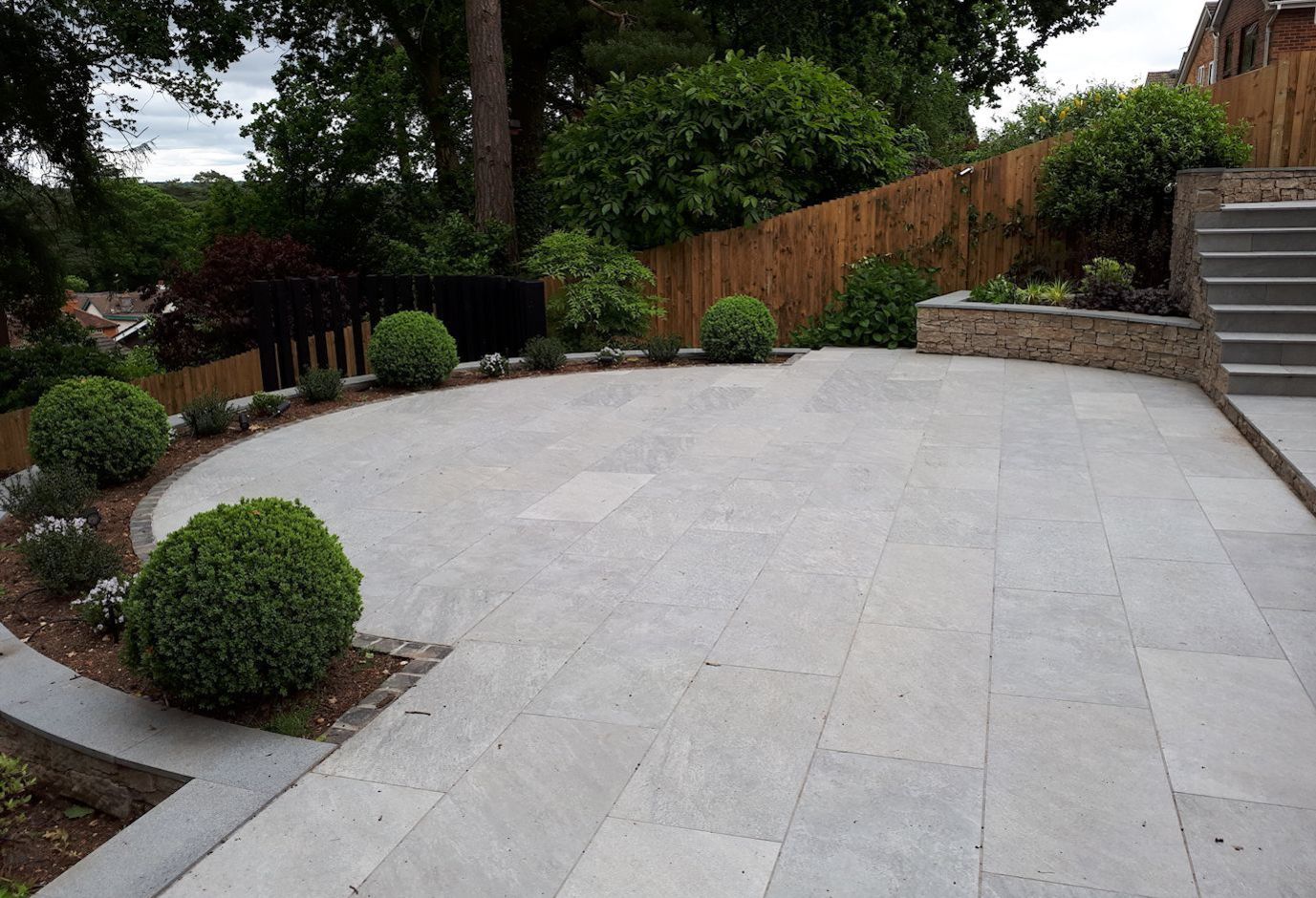
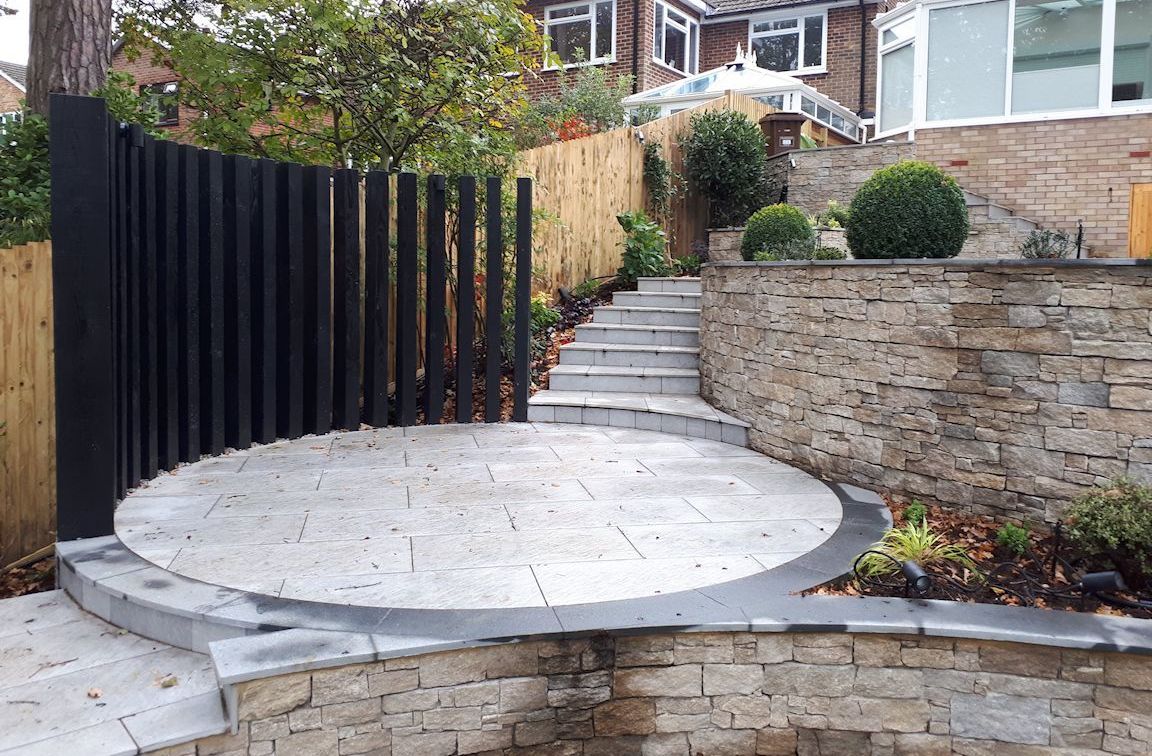
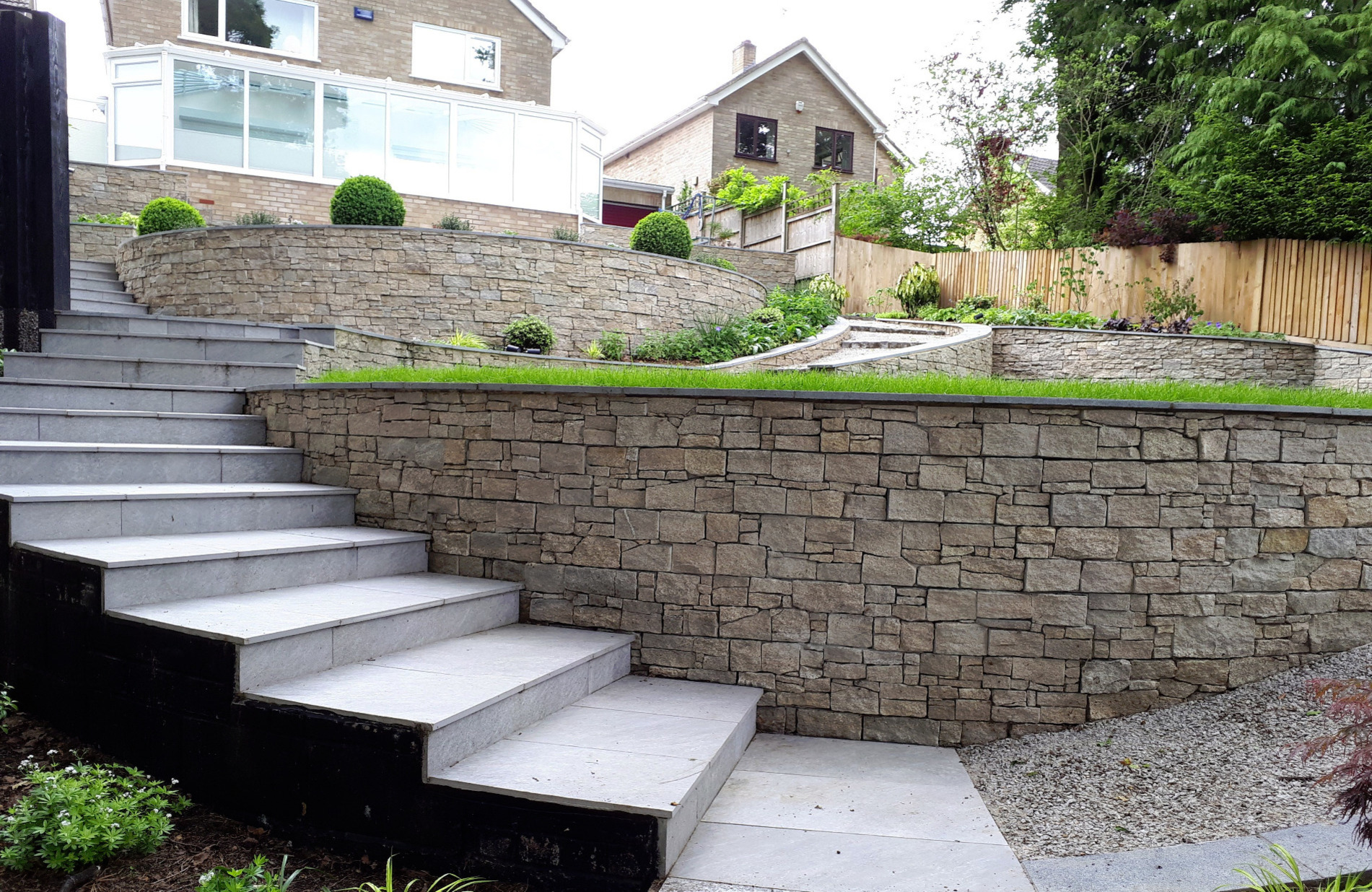
Here are some of our latest projects
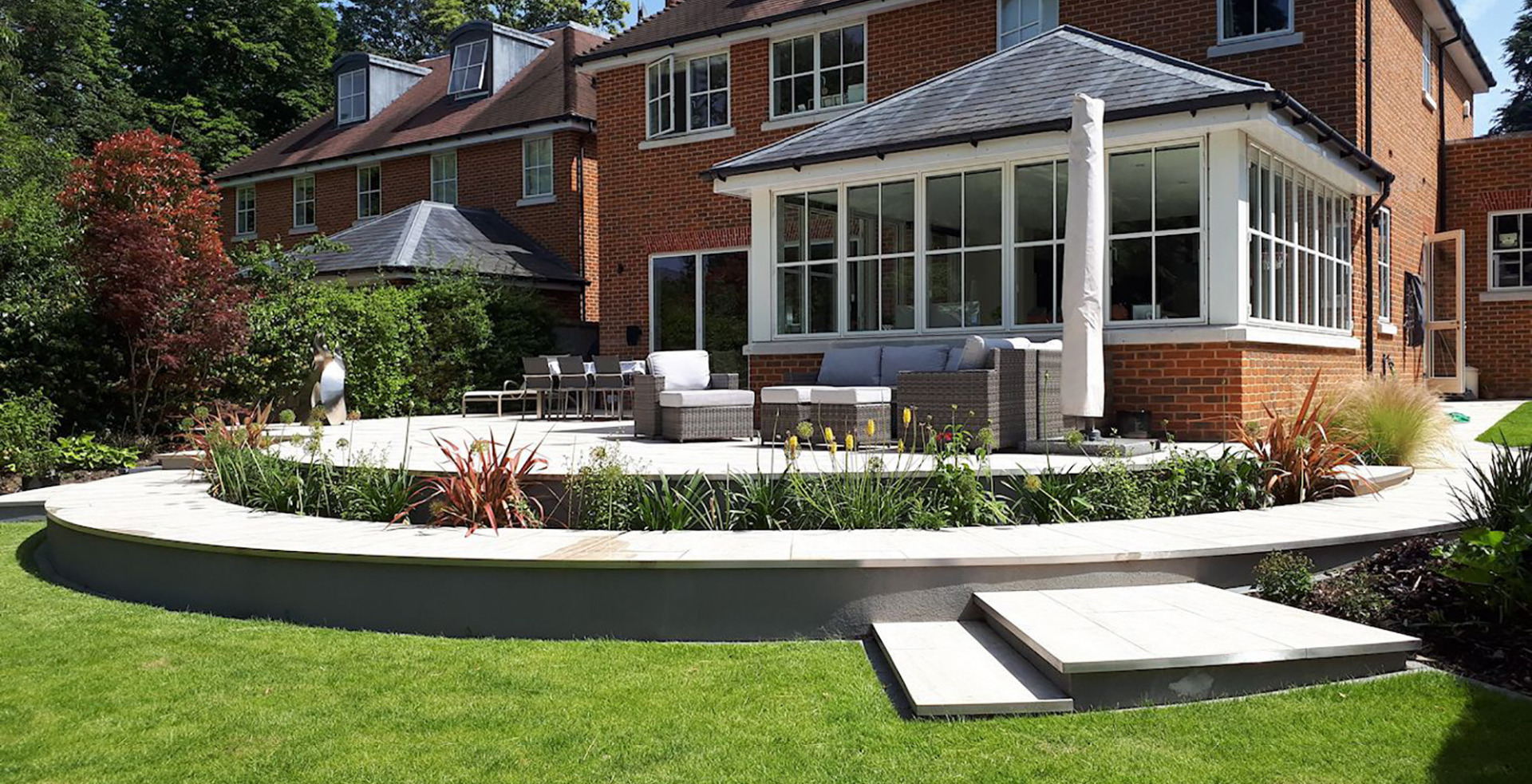
Garden Design in Esher, Surrey
This large sloping garden design in Esher, Surrey was completed last year. A large, curved terrace surrounds the house with plenty of room for outdoor furniture and a barbeque. There is a contemporary, bespoke water feature on the terrace. Steps lead down into a large, child friendly lawn area. There is a well-equipped garden room/office/kids den at the bottom of the garden.
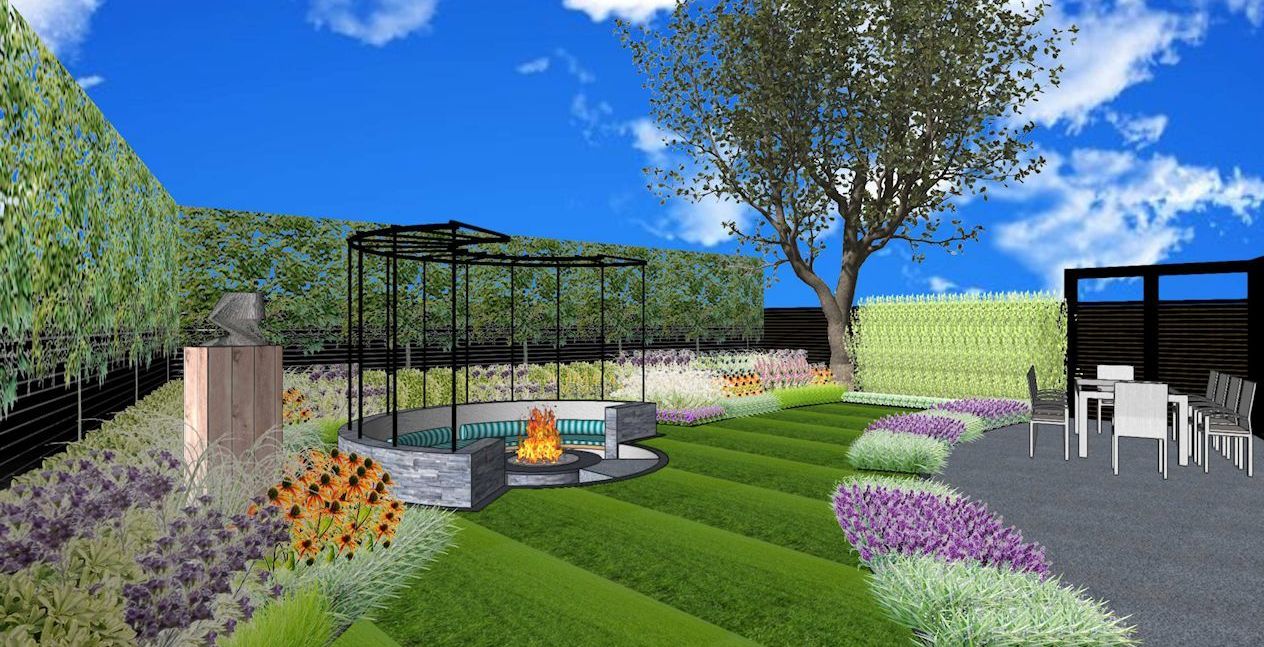
Contemporary garden design in Bracknell, Berkshire.
This this relatively small garden design in Bracknell, Berkshire makes use of every centimetre of space. There is a curved patio by the house, a sunken seating area with a curved metal pergola and gas fireplace. Boundaries are screened with single-rail pergolas and pleached trees. There is plenty of planting to soften the hard landscaping.
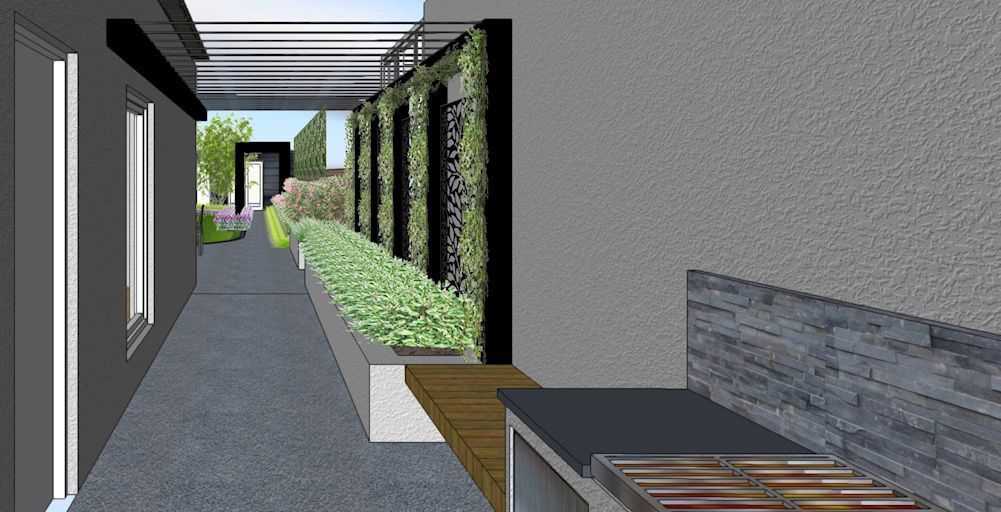
Garden design in Windsor, Berkshire
The brief for this rear garden design in Windsor, Berkshire was to make use of an unusued side return. I designed a seating area with a steel and wire pergola to screen the space from the neighbours' conservatory. There is a cooking area, raised planters and built-in benches. The rest of the garden was kept simple, with screening to the boundaries, a child-friendly lawn area and a screened space for a trampoline.
Get in touch if you need help designing your sloping garden
In my opinion, gardens with different levels are the most interesting. The level changes dictate that the garden is split into different areas each with its own distinct character. You can use the level changes to create gorgeous water features. Paths can weave gently down through the levels. You have many design options. My garden in Berkshire is very steeply sloped, and although it’s not huge, I’ve managed to create several different areas and a lovely journey around it.
If you would like help designing your garden, or if you simply want a new planting scheme please drop me an email, or give me a call to discuss your project.
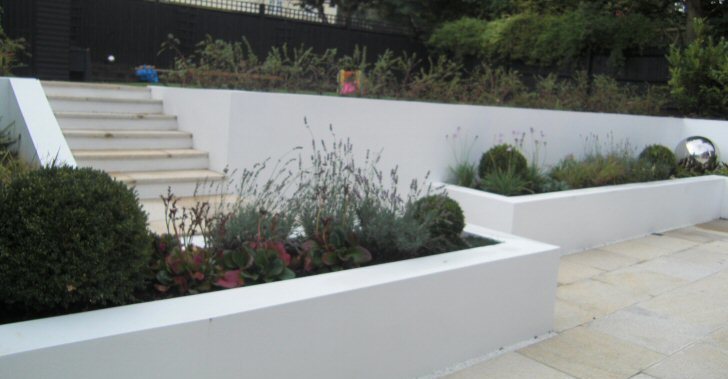
Share this post:



